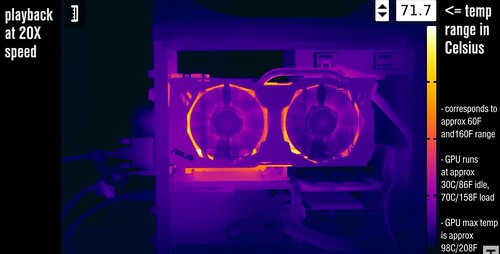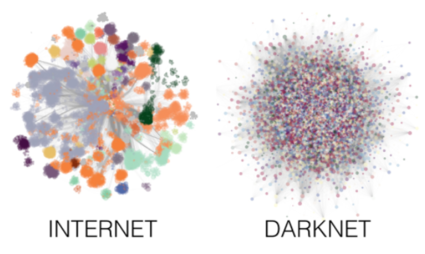Author Archives: Todd Hoff
Author Archives: Todd Hoff
Hey, it's HighScalability time:


This is a guest repost by G Gordon Worley III, Head of Site Reliability Engineering at AdStage.
When I joined AdStage in the Fall of 2013 we were already running on Heroku. It was the obvious choice: super easy to get started with, less expensive than full-sized virtual servers, and flexible enough to grow with our business. And grow we did. Heroku let us focus exclusively on building a compelling product without the distraction of managing infrastructure, so by late 2015 we were running thousands of dynos (containers) simultaneously to keep up with our customers.
We needed all those dynos because, on the backend, we look a lot like Segment, and like them many of our costs scale linearly with the number of users. At $25/dyno/month, our growth projections put us breaking $1 million in annual infrastructure expenses by mid-2016 when factored in with other technical costs, and that made up such a large proportion of COGS that it would take years to reach profitability. The situation was, to be frank, unsustainable. The engineering team met to discuss our options, and some quick calculations showed us we were paying more than $10,000 a month for the convenience of Continue reading
Hey, it's HighScalability time:


Hey, it's HighScalability time:
Hey, it's HighScalability time:



This is a guest post by Apurva Davé, who is part of the product team at Sysdig.
Having worked with hundreds of customers on building a monitoring stack for their containerized environments, we’ve learned a thing or two about what works and what doesn’t. The outcomes might surprise you - including the observation that instrumentation is just as important as the application when it comes to monitoring.
In this post, I wanted to cover some details around what it takes to build a scale-out, highly reliable monitoring system to work across tens of thousands of containers. I’ll share a bit about what our infrastructure looks like, the design choices we made, and tradeoffs. The five areas I’ll cover:
Instrumenting the system
Relating your data to your applications, hosts, and containers.
Leveraging orchestrators
Deciding what to data to store
How to enable troubleshooting in containerized environments
For context, Sysdig is the container monitoring company. We’re based on the open source Linux troubleshooting project by the same name. The open source project allows you to see every single system call down to process, arguments, payload, and connection on a single host. The commercial offering turns all this data into thousands of Continue reading
Hey, it's HighScalability time:

Hey, it's HighScalability time:



When Adrian Cockroft—the guy who helped put the loud in Cloud through his energetic evangelism of Cloud Native and Microservice architectures—talks about what’s next, it pays to listen. And you can listen, here’s a fascinating forward looking talk he gave at microXchg 2017: Shrinking Microservices to Functions. It’s typically Cockroftian: understated, thoughtful, and full of insight drawn from experience.
Adrian makes a compelling case that the same technology drivers, faster networking and cheaper messaging, that drove the move to Microservices are now driving the move to Functions.
The payoffs are all those you’ve no doubt heard about Serverless for some time, but Adrian develops them in an interesting way. He traces how architectures have evolved over time. Take a look at my gloss of his talk for more details.
What’s next after Functions? Adrian talks about pushing Lambda functions to the edge. A topic I’m excited about and have been interested in for sometime, though I didn’t quite see it playing out like this.
Datacenters disappear. Functions are not running in an AWS region anymore, code is placed near the customer using a CDN at CDN endpoints. Now you have a fully distributed, at the edge, low Continue reading
Hey, it's HighScalability time:
Hey, it's HighScalability time:


I programmed a thing. It’s called Probot. Probot is a quick and easy way to get high quality answers to your accounting and tax questions. Probot will find a real live expert to answer your question and handle all the details. You can get your questions answered over Facebook Messenger, Slack, or the web. Answers start at $10. That’s the pitch.
Seems like a natural in this new age of bots, doesn’t it? I thought so anyway. Not so much (so far), but more on that later.
I think Probot is interesting enough to cover because it’s a good example of how one programmer--me---can accomplish quite a lot using today’s infrastructure.
All this newfangled cloud/serverless/services stuff does in fact work. I was able to program a system spanning Messenger, Slack, and the web, in a way that is relatively scalabile, available, and affordable, while requiring minimal devops.
Gone are the days of worrying about VPS limits, driving down to a colo site to check on a sick server, or even worrying about auto-scaling clusters of containers/VMs. At least for many use cases.
Many years of programming experience and writing this blog is no protection against making mistakes. I made a Continue reading

Hey, it's HighScalability time:

This is a guest repost by Ken Fromm, a 3x tech co-founder — Vivid Studios, Loomia, and Iron.io. Here's Part 1 and 2 and 3.
This post is the last of a four-part series of that will dive into developing applications in a serverless way. These insights are derived from several years working with hundreds of developers while they built and operated serverless applications and functions.
The platform was the serverless platform from Iron.io but these lessons can also apply to AWS Lambda, Google Cloud Functions, Azure Functions, and IBM’s OpenWhisk project.
Arriving at a good definition of cloud IT security is difficult especially in the context of highly scalable distributed systems like those found in serverless platforms. The purpose of this post is to not to provide an exhaustive set of principles but instead highlight areas that developers, architects, and security officers might wish to consider when evaluating or setting up serverless platforms.
High-scale task processing is certainly not a new concept in IT as it has parallels that date back to the days of job processing on mainframes. The abstraction layer provided by serverless process — in combination with Continue reading
Hey, it's HighScalability time:
